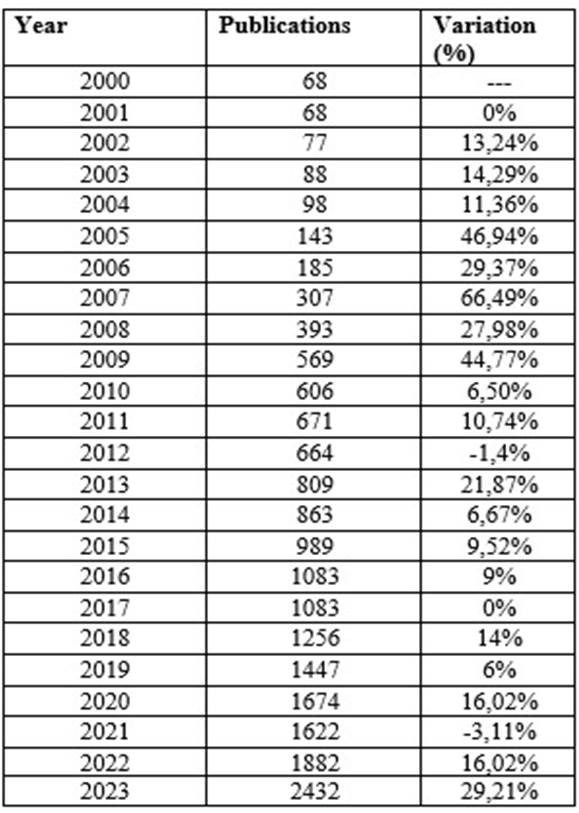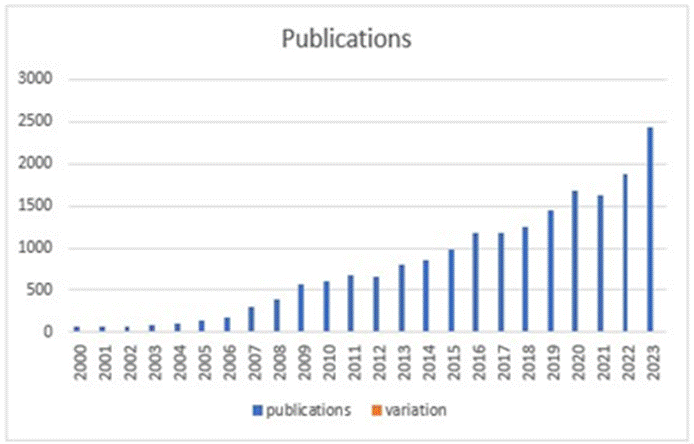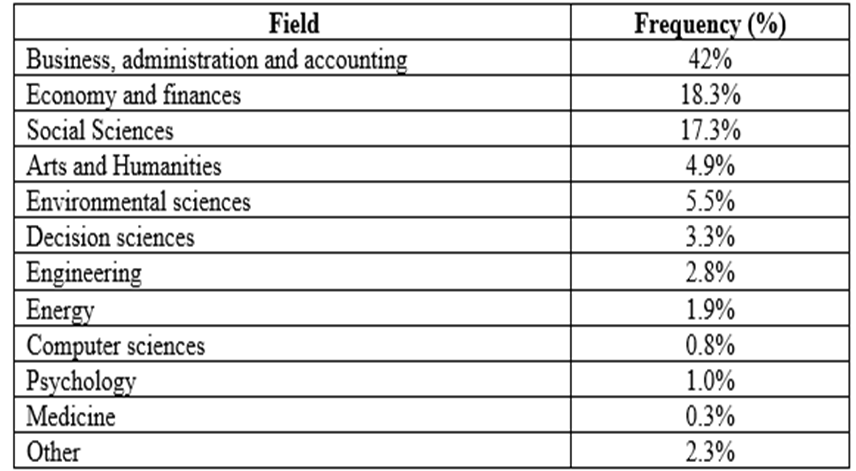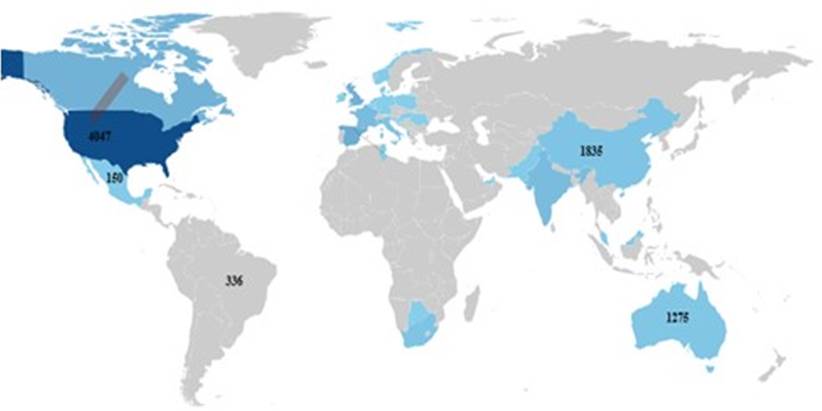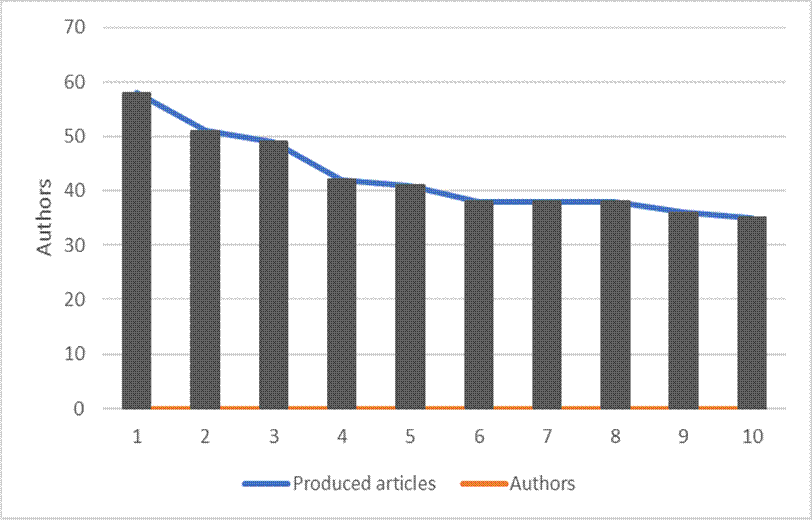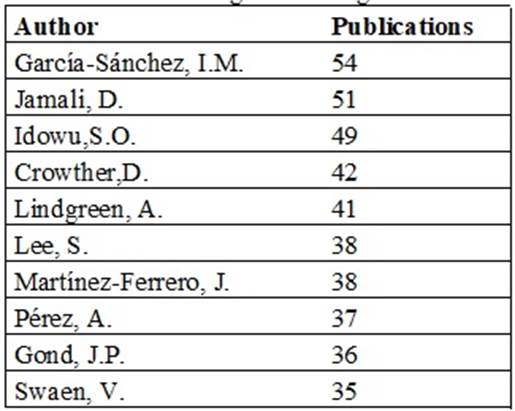INTRODUCTION
Back in the 1960s, Biologist Rachel Carson published the book “Silent Spring” (1962), which warned about dangers the indiscriminate use of synthetic chemical pesticides and insecticides in the USA, and about how harming it was for the environment. Silent Spring was a milestone for the environmental movement, because its author claimed not just for the end of pesticide using, but for the need of having a new philosophy for science. There was the urgency of reflecting about the relationship between man and nature. The book shines light on a significant environmental issue and turns topics like these into public interest, it gets to warn about and calls the attention of public opinion to the environment (Carson, 2013).
. (Ferreira, 2008, p. 22)The restlessness produced by nuclear precipitation effects, by warnings in Silent Spring and by a series of environmental hazardous events led to changes in thoughts and behaviors that have resulted in a new environmentalism, which has well defined and conscious of goals and demands of their political dimension; it gained power and called attention to the devastating consequences that could be caused by unlimited growth, as well as became a public concern and turned into a real Environmentalist Revolution
After the Silent Spring milestone, there were other events recorded in history, such as the Rome Club, in 1968; Greenpeace, in 1971; The Stockholm Conference, in 1972; The First Green Party, in 1983; the Brundtland Report, 1987; The Global Forum of NGOs, in 1992; Eco 92, Rio + 5, in 1997; Rio + 2002 (Ferreira, 2008) and Rio + 20, in 2012.
Meetings held by the United Nations - UN - increased the concern with environmental issues. The First Conference on the Environment, whose goal was to make society aware of this problem, stood out for addressing human actions that were degrading the plant and causing a whole series of destructions that could compromise future generations. The “Brundtland Report” advocated for wealth distribution as way to achieve global development among divergent positions, between rich and power countries. It was the first document applying the term sustainable development, which aims at fulfilling nowadays needs without compromising future generations (Pimenta and Nardelli, 2015).
The idea of corporate social responsibility emerged from the principle that companies are responsible for several problems that have impact on society. Therefore, they have the conditions and the duty to contribute to an even development. Accordingly, actions taken by companies through their techniques and resources to reach their material goals can also contribute to solve social issues (Tomei, 1984).
According to Meda (2013) Socially responsible companies, on average, are more creative and safer, they can count on support from the community, on consumers and on investors’ preference, on employees’ enthusiasm and commitment; they do not accumulate labor, environmental, legal and ethical liabilities.
The Corporate Social Responsibility (CSR) movement gathers political efforts, so companies can be tuned on public and social needs, and seek corporative governance as the support for organizations to deal with employees, consumers and community as they deal with stakeholders. As time went by, it became a priority for nowadays society, since it opened room for greater expectation about the social role to be played by businesspersons. This process turns issues related to social responsibility into the target of organizations, given its impact on companies’ economic value (Puppim, 2013).
Back in the 1990s, businessman Stephan Schmidheiny published the book “Changing Course, A Global Business Perspective on Development and the Environment” (1992), which shows that businessmen could also focus their business strategies on this development type, rather than just on favoring the economic side; they should take the environment into account, as well.
The world scenario is marked by great changes in the planet’s sustainability. Thus, it is impossible to refute the need of having business consciousness. The unstopping changes imposed by society demand attitude by organizations and by their managers, be them public or private. They are now pressured by impacts caused by their activities on the environment.
On the one hand, there is growing environmental concern and, on the other hand, there are organizations adopting new strategies to boost financial growth. Simultaneously, they can embody the social responsibility linked to their activity. It is clear that Corporate Social Responsibility has evolved due to its impact on society as a whole, but how is this evolution happening?
The overall aims of the present study were to analyze scientific production evolution in the Corporate Social Responsibility field, mainly in Applied Social Sciences, based on publications found in Scopus database, and to produce bibliometric indicators, as well as to analyze the interdisciplinary connection between CSR and other fields, from 2000 to 2023.
It also aimed at identifying to which extent the academic community is contributing with research and study, at finding the countries and institutions accounting for the largest number of publications on CSR, and at recording the most cited authors. In order to answer to these questions, the present study was based on the following problem question: would the evolution of the scientific production about Corporate Social Responsibility, in the 21st century, a perception by the business world that their strategies and relationship with both the community and the environment must be reevaluated?
Nowadays world crisis brought along urgency in encouraging changes in traditional management models. The economic crisis strongly influences all economy sectors, so we are currently experiencing an environmental crisis due to fast changes in climate caused by the excessive use of natural resources, and to global warming. Capitalism practices have been bringing along significant impacts, and they have been forming a society oriented to consumption, besides giving birth to labor-precariousness issues (Boff, 2014). As stated by (Boff, 2014): We are facing a severe civilizational crisis.
Based on the words in the Earth Letter, sustainability is a crucial matter for life permanence on Earth; society has never faced such a threat to the future of all. It is not acceptable to get to a point of no return, be it for carelessness and ignorance. The principle of precaution and preservation is more valuable than indifference, its ideal scenario is to have the population aware of the importance to get to the full sustainability stage, which will provide relief and hope to build more history about a promising future (Boff, 2014).
Studies on corporate social responsibility have been highlighted in the academic field as an increasingly essential practice for organizations that gain competitive advantages over their competitors when implementing actions in favor of social, economic, and environmental aspects (Cezarino et al., 2022). Since the 1990s, there has been a remarkable growth in research focused on the scientific knowledge of CSR, making it one of the most relevant and discussed topics of the 21st century (Santos-Jaén et al., 2021).
The economic power of organizations, which in some cases is even greater than that of certain countries, has local, national, and international impact. Their decisions extend beyond economic effects and also influence social, environmental, and political spheres. However, the absence of global policies for environmental issues is evident, as they rely on global agreements for sustainability (Puppim, 2013; Puppim & Qian, 2023). Therefore, it is possible to observe the need for the importance of monitoring and understanding how studies have been conducted and evolved in order to establish the foundations of the sustainability field, specifically corporate social responsibility, to question the status quo and contribute to sustainable development.
METHODOLOGY
In this bibliometric literature review, with a quantitative approach, the evolution of scientific production, publication areas, most frequent languages, geographical distribution of publications, most relevant authors (Lotka's Law), institutions with the most affiliations, journals that were published (Bradford's Law), keywords (Zipf's Law), and citation counts were analyzed. For the analysis and processing of the research data, these steps were operationalized through the search filters available in the Scopus database and Microsoft Excel, as well as other bibliometric studies (Jan et al., 2022; Santos-Jaén et al., 2021).
From the methodological viewpoint, the present study followed the exploratory, bibliographic, descriptive and bibliometric research design, and it implied bibliographic research to select the theoretical framework about what has been discussed about this topic. This element will be important for theoretical reference development. The study is descriptive because it aims at observing, classifying, recording, analyzing and interpreting data, without manipulation by researchers through bibliometric research.
Bibliometric research was the technique adopted for data collection purpose, which is a focal point in the current study. It is so, because it will allow reaching the proposed goals. Bibliometric research refers to a statistic technique capable of measuring scientific production and of following up the growth of knowledge fields (Costa et al., 2012).
The advantage of using bibliometric studies lies on information standardization based on statistics, since it makes data measuring and visualization easier. The study shows information on scientific production carried out until present times by bringing up important already approached aspects and by adding knowledge to the conduction of further studies (Dos Santos et al., 2010).
Oftentimes, bibliometric research is developed from information gathered in large databases like Web of Science, Scopus and, most recently, Google Scholar Metrics. Each database has its own features and particularities, such as target public, thematic fields of interest and selection criteria. Moreover, they regard a data series and the adoption of different metrics. These elements must be used according to the field to be assessed and in compliance with research aims (Costa et al., 2012).
To achieve the objectives of this work, the Scopus database was used, accessed through the Capes Portal, which allows students from partner institutions to have free access to the largest research platforms. The research universe comprised all publications indexed in the Scopus database in the period from 2000 to 2023, which constituted the amount of 19,171 articles for data collection on the Scopus website and analysis, the following set of words was applied: "corporate social responsibility" or "environmental social responsibility" or "social responsibility", then the filter "Business, Management and Accounting" and "Economics, Econometrics and Finance" was applied to select the research area to be analyzed.
DATA COLLECTION AND TREATMENT
Scopus database was used to reach the present study’s goals. It was accessed through Capes Portal. Scopus database is a multi-disciplinary platform encompassing the abstract of 27 million articles, references, scientific literature indices, besides indexing more than 18,000 journal titles from 5,000 international editors, with daily updates (Costa et al., 2012). It provides a broad view of research production worldwide, in the science, technology, medical, social sciences and arts, and humanities fields (Prado et al., 2017).
Besides English, there were articles written in other languages; 60% of its coverage is outside the Anglo-Saxon America. The research basis simultaneously encompasses the content of articles indexed in its platform in the web and content based on the assessed topic (Mesquita et al., 2006).
Investigation universe comprised all indexed publications in Scopus database between 2000 and 2023. The following set of words was applied to Scopus for data collection purpose: corporate social responsibility” or “environmental social responsibility” or “social responsibility”; then, the following filters were applied: “Business, Management and Accounting” and “Economics, Econometrics and Finance” to select the research field to be analyzed.
The established analysis categories provided the following information: scientific production evolution, publication fields, the most frequent languages, publications’ geographic distribution, the most relevant authors (Lotka Law), institutions with the largest number of affiliations, journals where they were published (Bradford Law), keywords (Zipf Law) and citations’ counting. These stages were operationalized through search filters found in Scopus database and in Microsoft Excel for research data analysis and processing purposes.
In a broader sense, bibliometric studies help building metrics about what is published in different knowledge fields.
The research between the time period 2000-2023 was careful to include the short pandemic period 2020-2023 because, according to Silveira et al. (2023), the World Health Organization (WHO) declared a state of emergency due to a series of pneumonia cases in the city of Wuhan, China. This author also complemented this topic by describing the SARS-CoV-2 virus as responsible for causing a viral infection transmitted by respiratory droplets.
Soon after, the outbreak covered the world and its high outspread rates made WHO declare the emergency pandemic, on March 11, 2020 - the number of cases was close to 500 million and approximately 6 million people died. Given this scenario, sanitary restrictions drastically changed everything in the world, including academic production, congresses and other activities in the scientific sphere.
According to Chizzotti and Saul (2021), all aspects of human life were deeply changed during the Covid-19 pandemic, such as its habits, certainties, projects and daily life. Somehow, all these changes altered the cycle of scientific production activities, because social distancing and restrictions made any sort of displacement unfeasible; thus, the academic science had to adjust itself to the new reality imposed by the sanitary urgency. The aforementioned authors also highlighted that the disease outbreak clearly exposed the vulnerability of personal life and social conviviality, as well as revealed the relevance of dilemma demanding political union and scientific competence. Therefore, in the data analysis, a greater increase in citations about CSR is expected in the period 2020-2023.
RESULTS AND DISCUSSION
THE EVOLUTION OF THE CONCEPT OF SOCIAL RESPONSIBILITY
According to Simões (2021), the late 19th century and the early 20th century were marked by social work professionalization process oriented to charity, philanthropy, welfare; it was mainly substantiated by ethical values based on human and democratic ideals. The emergence of this profession was observed during the Industrial Revolution, mainly in England, where social rose as mediator to manage conflicts between employees and employers, mainly due to its strong presence in unions.
As for Jardim (2010), social work is closely linked to facing social issues at their multiple expressions, which results from contradictions of the capitalist society. This author adds to this statement by saying that the very basis of social work, as specialized practice, is linked to several expressions of social issues. It rises as the main element of industrialization and production-capitalism implementation, as well as of labor class emergence and of part “mesocracy’s” industrial fraction.
In a broader sense, inequality conditions, exploration and exclusion are mostly caused by the capitalist system, which boosted the rise of social work as profession focused on social intervention and on seeking solutions for issues faced by the working classes (Iamamoto & Carvalho, 1998).
Based on the evolution of the corporate social responsibility rhetoric, Jardim (2010) states that business entities started expanding CSR in association with an ethical commitment that was substantiated by sustainable development in comparison to the State’s lack of efficiency in solving a country’s social issues. In a broader sense, governments implement a series of specific strategies through fiscal incentives to foster private social policies aimed at contributing to a protection system supported by excluding actions and focused on social.
Accordingly, the concept of social responsibility brings along a diversity of constructs and introduces a scene of theories by outspreading several approaches (Yevdokimova et al., 2019). The first traces of CSR date back to the early 1920s, when the term “venture philanthropy” emerged; it involved actions taken individually by businessmen and was not directly linked to companies.
However, in 1889, Andrew Carnegie (businessman and philanthropist) published the book: The Gospel of Wealth, where he argued that “the life of a successful businessman should join two parts, the ‘first would be dedicated to wealth collection and accumulation, and the second one should be dedicated to the subsequent distribution of this wealth for noble causes” (Yevdokimova et al., 2019, p. 70).
However, it was back on the 1950s that corporate social responsibility started being discussed in a specific way, based on studies carried out by economist Howard Bowen and outspread in his book: Social Responsibilities of the Businessman. He defined CSR, which was first called Social Responsibility (SR), as “refers to businessmen’s duty to follow these policies, to make these decisions or to follow desired action lines in terms of our society’s goals and values” (Bowen, 1953, p. 6). According to Bowen, CSR would not be a solution for all problems in society; however, it would contribute to guide future businesses.
According to Carroll (1999), ideas in Bowen’s work pointed out that organizations’ actions would have impact on society’s life and those businesspersons would have a much broader responsibility than those addressed in their profit and loss accounting statements. Similarly, Puppim (2013) argues that such impacts reach several economic levels. Bowen’s constructs provided the very basis for discussions about the theory and practices of CSR in early 20th century. Keith Davis was the most outstanding writer at that time, he defined those decisions made and actions taken by organizations aimed at targets that were beyond companies’ economic and technical interests (Carroll, 1999).
William C. Frederick also made important contributions to the definition of CSR, since he argued that companies should inspect their actions to meet the public’s expectations by improving socio-economic well-being. An analysis of it would imply the viewpoint that natural and human resources should be used not just to aim private initiatives, but society as a whole (Frederick, 1960).
In 1963, Josesh W. McGuire declared in his book “Business and Society” that companies would not only be accountable for legal and economic matters, but they would also have social responsibilities that exceed the imposed duties. McGuire created a more objective definition that encompassed economic and legal matters; he expanded his definition by claiming that companies must care with political issues, with the well-being of the location they are inserted in, with education, with the health of their employees and with society, in general (Carroll, 1999).
The 1970s, time when the social and environmental crisis had worsened, was the moment of building awareness about social responsibility. There was increase in discussions about association among organizations, government and society. The concept of CSR was than seen within an ethical context, and it involved different needs of social actions.
In 1976, Fitch (1976, p. 38) defined CSR as the “
”. According to Fitch, a company was socially responsible when it was capable of identifying social issues and of seeking feasible solutions to them, and of knowing when to act in order to solve them.attempt to solve social issues fully or partly caused by the corporation
Economic and legal responsibilities set the accountabilities mandatory to organizations. Ethical and voluntary responsibility has defined that these accountabilities exceed what is expected from companies. Ethical responsibility features attitudes that go beyond legal and voluntary accountabilities featured as philanthropic actions (Carroll, 1999).
Carroll’s concept is seen as an important update in CSR research, since it determined different dimensions of Social Responsibility and described the responsibilities that must be met by managers.
At late 1970s, companies started to be seen as moral bodies and organizational decisions exceeded what was required by law. They were perceived as the outcome of a planned model, of its goals, rules and procedures. The individualist thinking was replaced by the organizational one. Thus, the sense of responsibility was detached from the concept of philanthropy; it started to be linked to consequences and to refer to consequences of business activities.
From the 1980s on, after the return of the liberal model, the concept of CSR faced some changes, since the market was the factor accounting for major relevance (Macêdo, 2013). Alternative topics within CSR also became the focus of further discussions, such as corporate social performance, public policies, organizational ethics and theory of stakeholders. In 1987, Epstein related CSR to social responsibility concepts, response capacity and business ethics.
. (Epstein, 1987, p. 104)Corporate social responsibility is mainly related to outcomes of organizational decisions related to specific matters and issues that (due to some normative standard) have beneficial effects, rather than adverse ones - effects on pertinent interested corporate parts. The normative correlation of corporate-action products has been the very target of corporate social responsibility
At that same time, Epstein (1987) also defined the concept of ethics in corporate businesses and responsibilities he called “civil social political process”. He argued that the starting point for such a process lies on the institutionalization of these factors within organizations. Back in the 1980s, the number of research aimed at bonding financial performance to CSR went skyrocket. This topic was better discussed in the following decade by Waddock and Graves (1997), according to whom, CSR was accountable for improvements in financial outcomes (Surroca et al., 2009).
Given the scenario built over the 1980s, some authors aimed at developing models to follow-up CSR evolution. One of the main models developed at that time was created by Wartick and Cochran (1985); it was called corporate social performance model, and used “principles, processes and policies to add responsibility, responsiveness and other social topics to administrative management” (Macêdo, 2013, p. 6).
The 1980s witnessed the rise of two approaches to bond CSR to strategic management: business and social issues management. The study line known as Business and Society focuses on the interests of social actors’ companies interact with. This approach places society at first position and states that CSR consists in the association between companies and society. It is different from what used to happen in the first studies on CSR, according to which, actions taken by companies were seen as philanthropy (Faria & Sauerbronnn, 2008).
Another line of thought contemporary to Business and Society was the approach introduced by the Social Issues Management School, whose goal was to create management tools capable of enhancing companies’ performance and ethics. It focuses on the use of resources and risk mitigation (Faria & Sauerbronn, 2008).
The 1990s were marked by the reinforcement of theories developed, so far. Different from what was observed in the prior decades, new definitions were created, but emphasis was given on clarifying the theories previously proposed and on enriching the CSR literature. This process was encouraged by actions taken by non-governmental entities, research institutes and companies that have started to work with this matter. At that time, according to Wood (1991), topics, such as corporate citizenship, corporate social performance and profitability, were the target of in-depth investigations.
It is easy observing that CSR topic evolution disregards changes in values resulting from events faced by countries: “from an industrial society, where CSR embodies economic meaning, to a post-industrial society where the topic favors aspects related to improving the quality of life” (Macêdo, 2013, p. 6).
According to Jamali (2008), CSR is linked to business model, and its policy works as self-regulation mechanism. Moreover, the Corporate Social Performance model, which is based on the three-dimensional model proposed by Carroll, back in 1979, was expanded and established. The model created by Wood meant a great update in CSR studies.
The already conceived CSR studies have been creating several concepts, methodologies and strategies for modern companies; however, the CSR definition keeps on evolving in the 21st century. Most nowadays models are featured as continuity or review of previously proposed models, but they aim at evenly integrating them, so they can be applied to organizations.
From the 2000s onwards, associations between CSR and other topics were identified, such as the case of business sustainability, stakeholders’ management and corporative citizenship. According to Macêdo (2013):
. (p. 7)Yet, because of changes on values and consciousness acquired by society, the understanding and relevance of social topics got bigger and, so, companies seek to better perceive the community when it comes to their social actions. There was increase in association among strategy, ethics and social responsibility
Data analysis and discussion was based on investigating articles composing the sample at the timeframe 2000-2023, in total, 19,171 documents about CSR were found between 2000 and 2023 in Scopus database. There was mean growth by 31% in the number of publications within the analyzed period-of-time, with emphasis on 2003, when rate higher than 174% was recorded. The year of 2012 was the only one recording negative variation (-2%) in comparison to the previous year (2011).
The total number of 6,108 publications was found between 2020 and 2023, and they showed variations in the number of CSR-related publications. The time between 2019 and 2020 recorded variation by 10.7%; at critical moments of the COVID-19 pandemic, this rate reached -2%. In 2022, there was little improvement in the number of published journals. Table 1 shows the occurrences observed through the analysis applied to the number of published articles in each publication year.
Figure 1 depicts the evolution of CSR studies; the year of 2000 recorded 68 publications; 2005, 143 publications; 2010, 606 publications - this number reached 1,447 publications in 2019. Table 1 also shows publications between 2020 and 2023 - time of Covid-19 pandemic. There was variation by approximately 16.02% between 2019 to 2020, the year of 2021 recorded drop in the number of articles about CSR (-3,11%), but there was growing recover of publications from 2022, onwards.
According to Table 2, the total number of published studies in the applied social sciences field recorded the highest rate of publications; it summed 60.3% of the total number of published articles. Business, administration and accounting responded for 43.5% of this total, and economy and finances accounted for 20% of it.
It is worth highlighting the significant value recorded for the social sciences field given CSR impact on society. As defined by (Carroll, 1979), business social responsibility covers economic, legal, ethical and voluntary expectations society has on organizations at a certain moment. Fields like arts, humanities, environmental sciences and decision sciences, engineering and energy recorded variation ranging from 6% to 1.4%. Computer sciences, psychology, agriculture and biological sciences were the fields where this topic’s relevance reached the lowest rates.
With respect to publications’ geographic distribution, it is important recording that such an information was only available in the database for 97.2% of the sample. Figure 2 shows the amount of scientific production per country. It is possible observing that the highest production rate (black and dark grey) was recorded in the United States (17%), United Kingdom (10.4%), Spain (5.4%) Australia (5.2%) and Canada (4.1%). The lowest rate of it (0.1%) was recorded for countries like Somalia, Syria and Uzbekistan. Brazil accounted for 1.03% of publications in this field within the sample.
Around 96% of studies published in the Applied Social Sciences field were written in English, and they were followed by studies published in Spanish (1.8%), French (0.5%) and Portuguese (0.3%).
As for measurements on authors’ productivity, Lotka Law features authors’ scientific production as follows: few authors produce a lot and many authors produce a little (Guedes & Borschiver, 2005). Figure 3 shows the number of authors X the number of produced articles, and it confirmed that the reversed J format in the Lotka Law meets the significant drop in standard and tends to be linear with an extensive chain of small producers. The authors standing out for productivity are listed in Table 3.
Institutions that stand out for the highest productivity on the herein addressed topic in Brazil were University of São Paulo (24 publications), Getúlio Vargas Foundation (14 publications), Federal University of Rio de Janeiro and Federal University of Ceará (8 publications).
The analysis allowed identifying 160 articles. Journal of Business Ethics published 36% of journals on CSR, Social Responsibility Journal published 13% of them and Corporate Social Responsibility and Environmental Management Journal published 11% of the total. According to the Bradford Law, production is divided into three zones, each one of them accounts for 1/3 of the total number of publications; thus, approximately 2,204 6,613/3, with respect to number of journals in each zone, according to this law, the 1st zone has Y, the 2nd one has 3Y and the 3rd zone has 3Y², approximately 3, 9 and 27.
The following institutions stood out: Copenhagen Business School (183 affiliates), York University (96 affiliates), Universiteit van Amsterdam (73 affiliates), Bucharest University of Economic Studies and Nottingham University Business School (both with 72 affiliates). Except for York University, all institutions are located in Europe, and this finding points out that the European continent is the one mostly encouraging CSR research.
The inclusion of new information to update the search in Scopus database allowed concluding, based on data screening, that some teaching institutions did not record any increase in the number of publications. Copenhagen Business School remains the institution with the largest number of publications; other institutions recorded increase in the number of publications, such as the Hong Kong Polytechnic University, which did not rank any position among the 15 institutions accounting for the largest number of publications in journals.
Table 4 presents the comparison between empirical data and theoretical calculation. Based on the recorded data, it is possible observing that none of the zones showed empirical results in compliance with the Bradford Law. This finding can point out that the analyzed field in the journals remains under consolidation process.
Table 5 shows the journals in the first zone of Bradford. Journal of Business Ethics, Social Responsibility Journal, Corporate Social Responsibility and Environmental Management Journal are among the journals belonging to applied social sciences field with the highest rates of publications in this topic. Except for Journal of Cleaner Production, which belongs to the environmental sciences field.
With respect to the impact of publications, Table 6 shows the 10 articles recording the highest rate of citations in absolute and relative values. The absolute value accounts for the total number of citations recorded since 1996; the relative value, in its turn, weighs the volume of citations in comparison to publication time.
The volume of citations refers to the contribution from the study to the scientific community when it comes to reference terms about topics. A publication is assessed based on the number of times it was cited in other articles (Umbelino, 2008). This process points out that the larger the number of studies referring to the publication, the stronger its impact on the scientific community. The most cited studies allowed observing the relevance of the stakeholders’ theory for the CSR field, since 70% of the studies recording the highest citation indices were related to it.
As for subjects with the highest relevance for the analyzed studies, it was possible analyzing the frequency of keywords determined by the authors. Table presents the amount of these keywords and their relative rate. The quantified words highlighted the prevalence of topics related to the interested parts, to environmental issues, and to strategy and ethics, because those are the words accounting for the largest number of occurrences.
CONCLUSIONS
The aim of the present study was to analyze the evolution of scientific production on Corporate Social Responsibility within the Applied Social Sciences field. It was based on publications indexed in Scopus database, from 2000 to December 2023, as well as to produce bibliometric indicators and analyze CSR interdisciplinary connection to other knowledge fields.
The bibliometric research has shown that corporate social responsibility has triggered the interest of several authors worldwide. It emerged as relevant subject, given its importance for society. The evolution of studies on CSR in the 21st century was analyzed and it showed mean growth by 31%; it jumped from 18 publications in 2000 to 1,447 in 2019.
The present research also showed that most studies are found in the applied social sciences field (60%). However, it is possible observing that this topic is also often assessed by the following knowledge fields: Environmental Sciences, Arts and Humanities (4.1% and 6%, respectively).
With respect to the origin of publications, 19% of them come from the United States, 11% from the United Kingdom, 6% from Spain and Australia, 4% from China, France and Germany. English is the language most often used in the publications (96.5%); it is justified by the fact that their countries of origin mostly have English as mother language.
Research results related to the number of publications per author were in compliance with the Lotka Law, which states that few authors publish a lot, and many authors publish a little. It was observed that 65% of authors have published up to 11 studies and only 3% of them published from 31 to 42 studies. García-Sánchez is the most productive one with 54 publications; he was followed by Jamali with 51 publications and by Idowu with 49 publications.
The research has shown that institutions accounting for the highest index of affiliates are Copenhagen Business School, York University, Universiteit van Amsterdam and Bucharest University of Economic Studies. Journals with the largest number of publications were Journal of Business Ethics, Social Responsibility Journal and Corporate Social Responsibility and Environmental Management Journal.
It is important mentioning that Brazilian institutions with the largest number of affiliates are University of São Paulo, Getúlio Vargas Foundation, Federal University of Rio de Janeiro and Federal University of Ceará. The analysis of publications and keywords’ impact has shown that 21% and 70% (respectively) of the most cited publications regard subjects related to the theory of stakeholders.
Sample analysis based on the Bradford Law compared theoretical data to empirical ones; it showed that information was not in compliance with Bradford Law’s guidelines. This finding can point out that CSR studies are still under consolidation process. It was also observed in the bibliographic research, CSR brings along a whole diversity of constructs, and presents a scene of theories that outspread several approaches.
Overall, the present study exposed the macro profile of scientific production on CSR. The herein assessed topic remains under evolution and consolidation process, because of the number of theories observed in it. However, it is expected that the present study can contribute to the best understanding of how production on this topic has been developing in the 21st century.
Information presented in the current study can encourage the development of scientific production on CSR, since the idea was to contribute to this topic’s outspread, communication and programming. It would allow the emergence of new authors and the evolution of the addressed topic.
The present research was limited to analyze publications in the Scopus database, in the 21st century. Thus, it is recommended to carry out further research based on other databases in order to compare results.
Despite the presented limitations, it is worth pointing out that the development of the current study was relevant, since the bibliographic research allowed observing shortage of bibliometric research on CSR aimed at analyzing scientific production in the applied social sciences field. Thus, the present study reached its goals and contributed to develop the herein addressed topic














